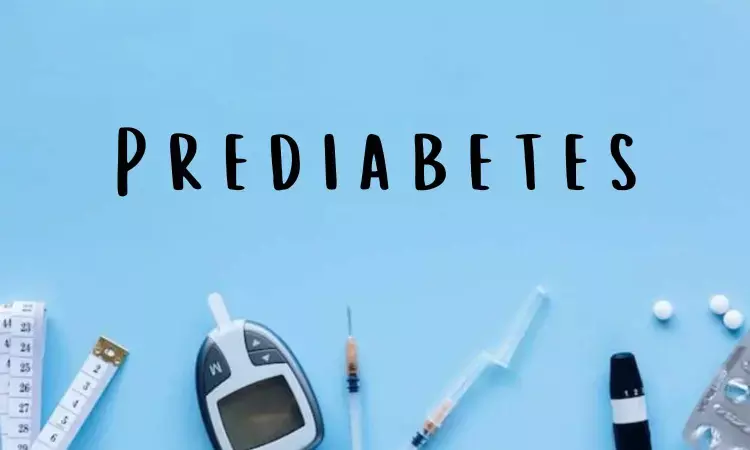- Home
- Medical news & Guidelines
- Anesthesiology
- Cardiology and CTVS
- Critical Care
- Dentistry
- Dermatology
- Diabetes and Endocrinology
- ENT
- Gastroenterology
- Medicine
- Nephrology
- Neurology
- Obstretics-Gynaecology
- Oncology
- Ophthalmology
- Orthopaedics
- Pediatrics-Neonatology
- Psychiatry
- Pulmonology
- Radiology
- Surgery
- Urology
- Laboratory Medicine
- Diet
- Nursing
- Paramedical
- Physiotherapy
- Health news
- Fact Check
- Bone Health Fact Check
- Brain Health Fact Check
- Cancer Related Fact Check
- Child Care Fact Check
- Dental and oral health fact check
- Diabetes and metabolic health fact check
- Diet and Nutrition Fact Check
- Eye and ENT Care Fact Check
- Fitness fact check
- Gut health fact check
- Heart health fact check
- Kidney health fact check
- Medical education fact check
- Men's health fact check
- Respiratory fact check
- Skin and hair care fact check
- Vaccine and Immunization fact check
- Women's health fact check
- AYUSH
- State News
- Andaman and Nicobar Islands
- Andhra Pradesh
- Arunachal Pradesh
- Assam
- Bihar
- Chandigarh
- Chattisgarh
- Dadra and Nagar Haveli
- Daman and Diu
- Delhi
- Goa
- Gujarat
- Haryana
- Himachal Pradesh
- Jammu & Kashmir
- Jharkhand
- Karnataka
- Kerala
- Ladakh
- Lakshadweep
- Madhya Pradesh
- Maharashtra
- Manipur
- Meghalaya
- Mizoram
- Nagaland
- Odisha
- Puducherry
- Punjab
- Rajasthan
- Sikkim
- Tamil Nadu
- Telangana
- Tripura
- Uttar Pradesh
- Uttrakhand
- West Bengal
- Medical Education
- Industry
Can Higher HDL levels lead to reversion to normoglycemia from prediabetes?

China: An analysis based on data from a retrospective cohort study revealed an independent connection between high-density lipoprotein cholesterol (HDL-C) and regression to normoglycemia in Chinese adults with prediabetes, revealing a specific non-linear relationship and threshold effect.
In their study, published in Scientific Reports, the researchers observed a significant positive connection between HDL-C levels and the regression from Pre-DM to normoglycemia to normoglycemia, specifically when HDL-C levels were below the inflection point. Consequently, keeping HDL-C levels near the inflection point in prediabetes patients may greatly raise the likelihood of reversion from pre-DM to normoglycemia.
Higher HDL-C levels show a positive association with prediabetes reversal to normoglycemia in Chinese adults, but only up to a certain threshold, the researchers stated.
Prediabetes is characterized by a blood glucose level above the "normal" range but below the diagnostic threshold for type 2 diabetes (T2D). Previous studies have shown that even a temporary return to normal blood glucose levels in pre-DM patients is related to a significantly reduced chance of developing T2D. Therefore, it is important to highlight the significant clinical advantages of transitioning from Pre-DM to normoglycemia. The primary objective of screening and treating prediabetes should be to restore normoglycemia.
The available evidence on the connection between HDL-C levels and the reversion from prediabetes to normoglycemia is currently limited. Therefore, Yong Han, The First Affiliated Hospital of Shenzhen University, Shenzhen, Guangdong Province, China, and colleagues sought to investigate the connection between HDL-C levels and the regression from Pre-DM to normoglycemia in a population of Chinese adults.
The study included 15,420 prediabetes patients in China who underwent health screening between 2010 and 2016. The researchers investigated the connection between HDL-C levels and reversion from Pre-DM to normoglycemia using the Cox proportional hazards regression model.
The Cox proportional hazards regression model with cubic spline functions and smooth curve fitting was employed to ascertain the nonlinear association between HDL-C and reversion from prediabetes to normoglycemia. A set of sensitivity analyses and subgroup analyses were also employed.
The study led to the following findings:
- Following the adjustment of covariates, the findings revealed a positive connection between HDL-C levels and the likelihood of reversion from Pre-DM to normoglycemia (HR 1.898).
- There was a non-linear relationship between HDL-C and the reversion from Pre-DM to normoglycemia in both genders, and the inflection point of HDL-C was 1.540 mmol/L in males and 1.620 mmol/L in females.
- There was a strong positive correlation between HDL-C and the reversion from Pre-DM to normoglycemia on the left of the inflection point (Male: HR 2.783; Female: HR 2.217). The sensitivity analysis confirmed the robustness of these findings.
- Subgroup analyses indicated that patients with SBP < 140 mmHg and ever smoker exhibited a more pronounced correlation between HDL-C levels and the reversion from Pre-DM to normoglycemia.
- There was a less robust correlation among patients with SBP ≥ 140 mmHg, current and never smokers.
The study provides evidence of a positive and nonlinear association between HDL-C levels and the reversion from prediabetes to normoglycemia in Chinese patients.
"Implementing intensified intervention measures to control the HDL-C levels of prediabetes patients around the inflection point may substantially enhance the likelihood of regression to normoglycemia," the researchers concluded.
Reference:
Mo, Z., Hu, H., Han, Y., Cao, C., & Zheng, X. (2024). Association between high-density lipoprotein cholesterol and reversion to normoglycemia from prediabetes: An analysis based on data from a retrospective cohort study. Scientific Reports, 14(1), 1-14. https://doi.org/10.1038/s41598-023-50539-w
Dr Kamal Kant Kohli-MBBS, DTCD- a chest specialist with more than 30 years of practice and a flair for writing clinical articles, Dr Kamal Kant Kohli joined Medical Dialogues as a Chief Editor of Medical News. Besides writing articles, as an editor, he proofreads and verifies all the medical content published on Medical Dialogues including those coming from journals, studies,medical conferences,guidelines etc. Email: drkohli@medicaldialogues.in. Contact no. 011-43720751


